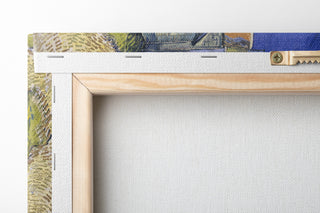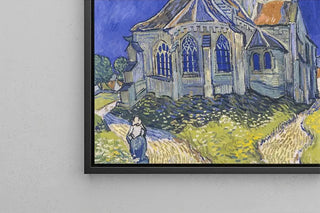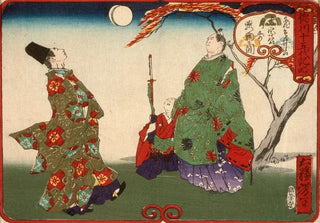Art print Asukai Masanori teaching Tokugawa Yoshimune to play kemari - Tsukioka Yoshitoshi | Art print


View from behind

Frame (optional)
Asukai Masanori teaching Tokugawa Yoshimune to play kemari: a scene of harmony and tradition
In this captivating artwork, Asukai Masanori immerses us in a scene filled with serenity and Japanese culture. The delicate colors, ranging from soothing greens to warm browns, create an intimate atmosphere where one can almost hear the gentle whisper of the leaves. The artist's technique, combining finesse of lines and richness of details, highlights the importance of human interactions in the practice of kemari, a traditional Japanese game. This canvas not only evokes a moment of knowledge transmission but also a deep bond between the master and his pupil, symbolizing the continuity of traditions.
Asukai Masanori: a master of 18th-century Japanese painting
Asukai Masanori, active during the Edo period, is renowned for his ability to capture the essence of Japanese culture through his works. Influenced by the aesthetic currents of his time, he skillfully integrated elements of nature and social practices into his compositions. His work is distinguished by meticulous attention to detail and a harmonious color palette, reflecting the importance of beauty in everyday life. Masanori played a key role in preserving and disseminating Japanese traditions, notably through scenes of daily life, such as the one where he teaches kemari to Tokugawa Yoshimune, an iconic moment in Japanese history.
A decorative piece with multiple assets
The art print of Asukai Masanori teaching Tokugawa Yoshimune to play kemari is an ideal decorative item to enrich your interior. Whether in a living room, office, or bedroom, this canvas adds a touch of elegance and culture. Its printing quality guarantees remarkable fidelity to the original details, allowing each viewer to feel the unique atmosphere of the work. By choosing this art print, you opt for a piece that not only beautifies your space but also evokes a rich history and an artistic tradition that endures through the ages.

Matte finish

View from behind

Frame (optional)
Asukai Masanori teaching Tokugawa Yoshimune to play kemari: a scene of harmony and tradition
In this captivating artwork, Asukai Masanori immerses us in a scene filled with serenity and Japanese culture. The delicate colors, ranging from soothing greens to warm browns, create an intimate atmosphere where one can almost hear the gentle whisper of the leaves. The artist's technique, combining finesse of lines and richness of details, highlights the importance of human interactions in the practice of kemari, a traditional Japanese game. This canvas not only evokes a moment of knowledge transmission but also a deep bond between the master and his pupil, symbolizing the continuity of traditions.
Asukai Masanori: a master of 18th-century Japanese painting
Asukai Masanori, active during the Edo period, is renowned for his ability to capture the essence of Japanese culture through his works. Influenced by the aesthetic currents of his time, he skillfully integrated elements of nature and social practices into his compositions. His work is distinguished by meticulous attention to detail and a harmonious color palette, reflecting the importance of beauty in everyday life. Masanori played a key role in preserving and disseminating Japanese traditions, notably through scenes of daily life, such as the one where he teaches kemari to Tokugawa Yoshimune, an iconic moment in Japanese history.
A decorative piece with multiple assets
The art print of Asukai Masanori teaching Tokugawa Yoshimune to play kemari is an ideal decorative item to enrich your interior. Whether in a living room, office, or bedroom, this canvas adds a touch of elegance and culture. Its printing quality guarantees remarkable fidelity to the original details, allowing each viewer to feel the unique atmosphere of the work. By choosing this art print, you opt for a piece that not only beautifies your space but also evokes a rich history and an artistic tradition that endures through the ages.
12,34 €






